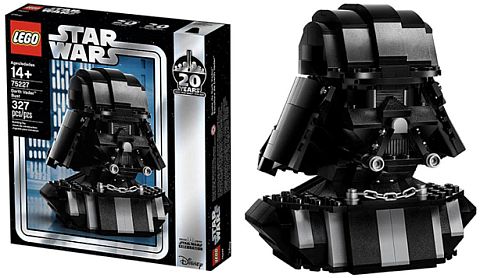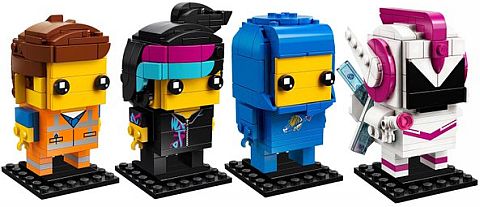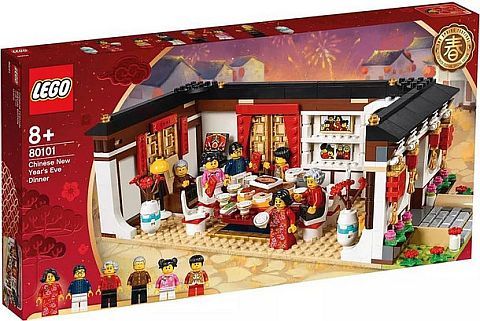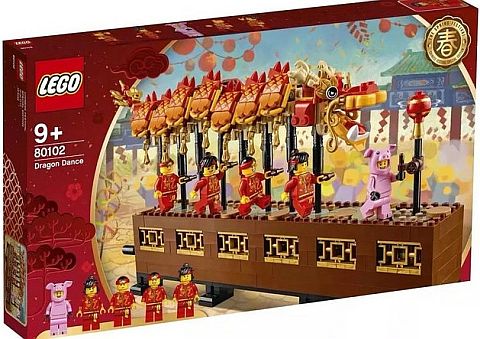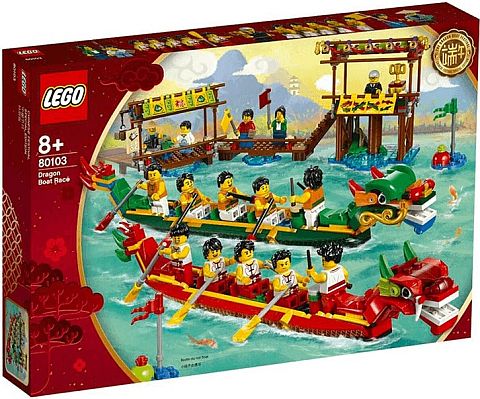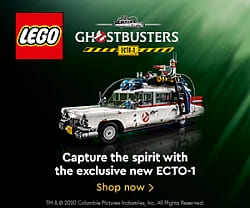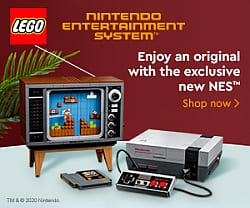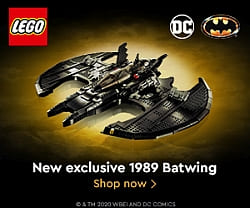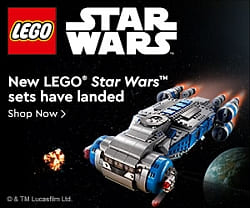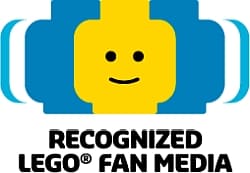There is a lot happening this month due to Star Wars Day (May the 4th) and also new releases in other themes. In addition, many of the summer sets have been revealed, so let’s take a look at what’s new and what’s coming in the near future.
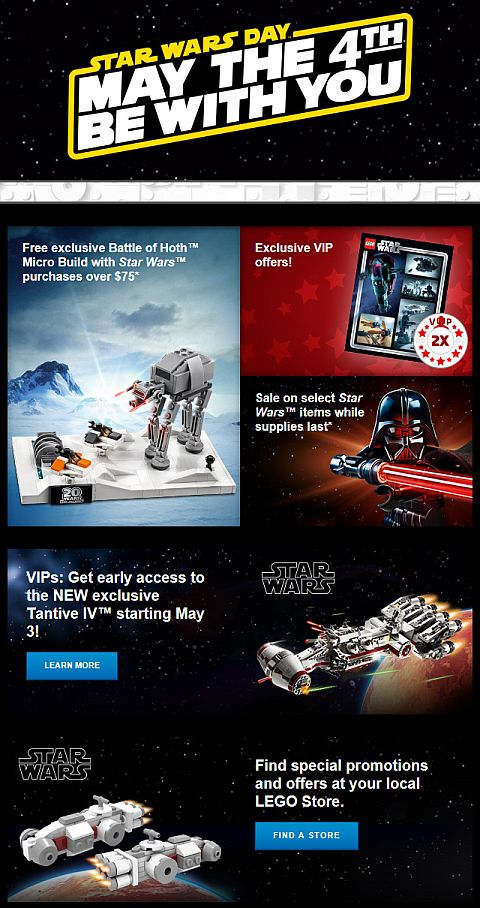
➡ LEGO STAR WARS TANTIVE IV: The big set that will be available on Star Wars Day is the #75244 LEGO Star Wars Tantive IV. We talked about this set in detail here is the description again: Build, play and display a legendary Star Wars starship! This LEGO Star Wars interpretation of Tantive IV, seen fleeing from an Imperial Star Destroyer in the opening moments of Star Wars: A New Hope, faithfully recreates all of the Rebel cruiser’s signature details, including an elongated hull, detachable escape pods, elevating gun turrets, cargo hold and 11 massive engines at the back. Remove the hull plating of this fantastic LEGO Star Wars vehicle to reveal a detailed 2-minifigure cockpit, conference area with table, weapon rack and a control console with 2 seats. The radar dish also doubles as a convenient carry handle, which makes it perfect for flying around the room. When the mission is over, this amazing kids’ buildable toy also makes a great centerpiece for any LEGO Star Wars collection. Includes 5 LEGO Star Wars minifigures: Bail Organa, Princess Leia, Captain Antilles, C-3PO and a Rebel Fleet Trooper, plus an R2-D2 droid LEGO figure. Measures over 5” (14cm) high, 24” (62cm) long and 7” (19cm) wide. 1768 pieces. Price: $199.99. You can find the set at the LEGO Star Wars section of the Online LEGO Shop.
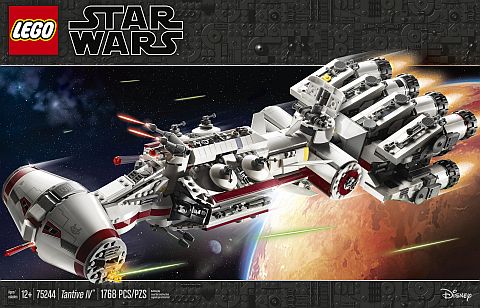
➡ FREE LEGO STAR WARS SET: The freebie for Star Wars Day is going to be the #40333 LEGO Star Wars 20th Anniversary Edition Battle of Hoth set with LEGO Star Wars purchases of $75 or more May 3-6. This is a nice addition to the other 20th anniversary LEGO Star Wars sets that were recently released. It comes with 195 pieces, a special LEGO Star Wars 20th anniversary tile, but no minifigures. You can find the other anniversary sets (with minifigs) at the LEGO Star Wars section of the Online LEGO Shop.
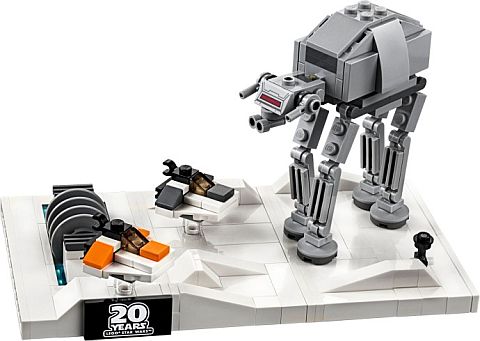
➡ DOUBLE VIP POINTS ON LEGO STAR WARS: LEGO is offering Double VIP Points on all LEGO Star Wars sets during the promotional period (May 3-6) to celebrate Star Wars Day! See the LEGO Star Wars section of the Online LEGO Shop.
➡ FREE LEGO STAR WARS POSTER: There is also a free LEGO Star Wars poster you can get with purchases of $35 or more. The posted features the LEGO Star Wars 20th anniversary sets. See the LEGO Star Wars section of the Online LEGO Shop.
➡ LEGO STAR WARS SETS ON SALE: Select LEGO Star Wars sets are going to be on sale May 3-6. We don’t know yet which sets will be discounted, so once the promotion starts, make sure you visit the LEGO Star Wars section of the Online LEGO Shop.

➡ LEGO COLLECTIBLE MINIFIGS DISNEY SERIES 2: The second wave of Disney minifigs are now available. The new collection features Vintage Mickey, Vintage Minnie, Hercules, Jack Skellington, Scrooge McDuck, Huey, Dewey, Louie, Chip, Dale, Jasmine, Jafar, Hades, Elsa, Anna, Sally, Edna and Frozone! Each Disney minifigure comes in a sealed ‘mystery’ bag together with one or more accessory elements, plus a collector’s leaflet and a unique display baseplate. They are available at the LEGO minifigures section of the Online LEGO Shop.
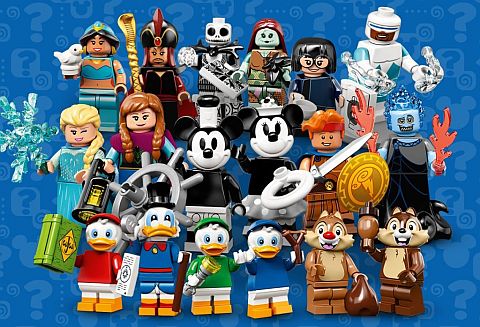
➡ SECOND WAVE OF THE LEGO MOVIE 2 SETS: The second wave of sets became available a few days ago. The #70837 LEGO Movie 2 Shimmer & Shine Sparkle Spa features an arched entrance, buildable loudspeakers, lever-operated revolving wall for Balthazar to ‘transform’ into a vampire bat, hot tub with an opening lid and trapdoor function, buildable sink, 2 removable tables, 6 brick-built potion bottles and assorted elements. Characters include Washed-out Wyldstyle, Benny, Balthazar, Calm-Down Kitty, Flaminga, Eight, Archimedes, and Balthazar vampire bat. The #70838 LEGO Movie 2 Queen Watevra’s So-Not-Evil Space Palace features a rotating top section with an opening, detachable rocket for Queen Watevra Wa’Nabi, detachable pods for other characters, security room, detailed dining room and a DJ booth. Characters include Bachelor Batman, Celeste, plus Queen Watevra Wa’Nabi, Ice Cream Cone, Star, Royal Guard and 2 Heart brick-built figures. Both sets come with lots of interesting pieces and sparkly colors. The #70839 LEGO Movie 2 The Rexcelsior is the largest set in the collection and features Rex’s spaceship shaped like a clenched fist. It has opening doors and lift-off roofs, dual microfigure cockpit, and a detailed microscale interior with various rooms and compartments. The handle at the back has a trigger to activate the rapid-fire, 6-missile spring-loaded shooter. Characters included are Stubble Trouble Emmet and Rex Dangervest, plus Emmet and Rex microfigures, and 5 micro raptor dinosaurs. The measures over 7” (19cm) high, 15” (40cm) long and 8” (21cm) wide, so yes, it’s big! You can find all the new sets, along with the previous releases at The LEGO Movie 2 section of the Online LEGO Shop.
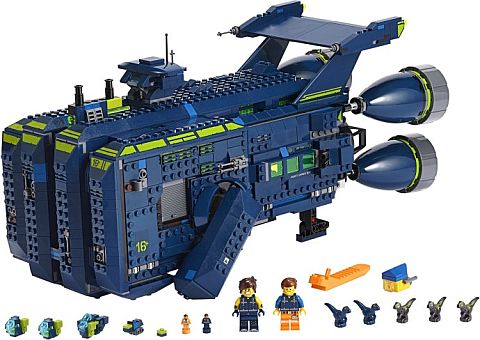
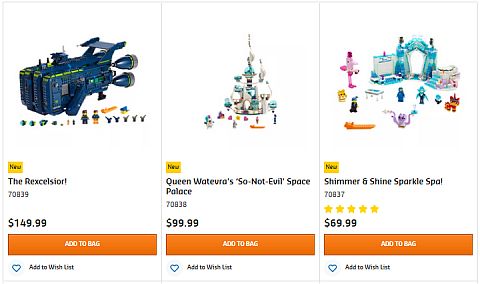
➡ NEW LEGO MARVEL SUPER HEROES SETS: There are also several new LEGO Marvel Super Heroes sets. The fire monster in the #76128 LEGO Marvel Super Heroes Molten Man Battle is over 7” (18cm) tall, has posable joints, a gripping claw, 6-stud rapid shooter, buildable ‘melting’ objects including half a car, street lamp and a traffic light attached to its body, molten lava elements and attachment points for minifigures. The three minifigs included are Spider-Man, Mysterio and a firefighter (trying to put out the raging fire monster with a tiny fire extinguisher – funny!). The #76129 LEGO Marvel Super Heroes Hydro-Man Attack includes MJ, Peter Parker, Mysterio, and Hydro-Man, plus a small slice of Venice. The jet in the #76130 LEGO Marvel Super Heroes Stark Jet and the Drone Attack features adjustable wings, an energy bomb storage compartment, a dual minifigure cockpit with a rear passenger seat and an opening hatch function, plus a couple of stud-shooters. You can press the button on the top of the jet to drop energy bombs or let Spider-Man swoop down on his spider web string. The set includes Happy Hogan, Nick Fury, Spider-Man, and Mysterio. Also, remember the new LEGO Marvel Super Heroes Avengers sets that were releases last month, including the #76124 LEGO Marvel Super Heroes War Machine Buster, the #76125 LEGO Marvel Super Heroes Iron Man Hall of Armor, the #76126 LEGO Marvel Super Heroes Avengers Quinjet, and the #76131 LEGO Marvel Super Heroes Avengers Compound Battle. Find them all at the LEGO Marvel Super Heroes section of the Online LEGO Shop.

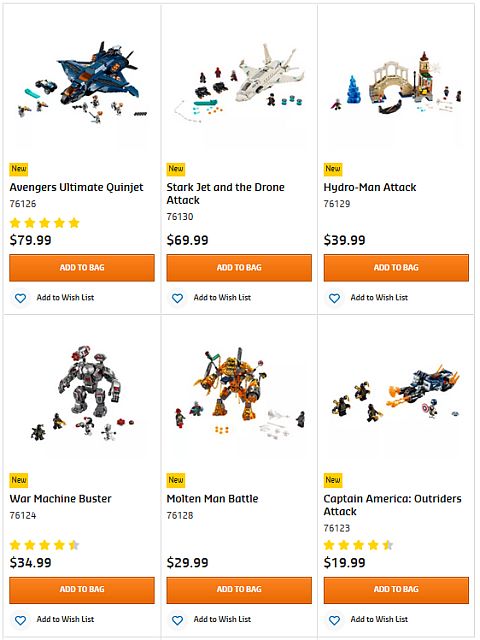
➡ LEGO TOY STORY 4 SETS: There are seven new LEGO Toy Story 4 sets; six in the LEGO 4+ line (formerly LEGO Juniors), and one under LEGO DUPLO. The sets include the #10766 LEGO Toy Story Woody & RC, #10767 LEGO Toy Story Duke Caboom’s Stunt Show, #10768 LEGO Toy Story Buzz & Bo Peep’s Playground Adventure, #10769 LEGO Toy Story 4 RV Vacation, #10770 LEGO Toy Story Buzz & Woody’s Carnival Mania, #10771 LEGO Toy Story Carnival Thrill Coaster, and the #10894 LEGO DUPLO Toy Story Train. Although the sets are meant for younger builders they can be also interesting to older fans due to the interesting decorated elements, and the minifigures. Note that the minifigs come with regular heads instead of the specialized pieces the previous Toy Story sets had. You can find the sets under the LEGO Juniors section of the Online LEGO Shop.
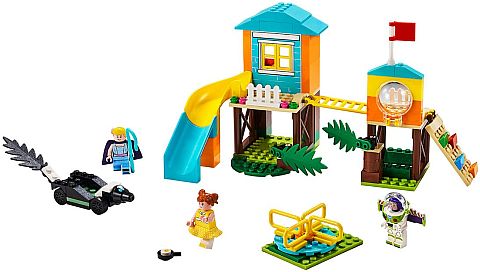

➡ LEGO POWERED UP COMPONENTS AVAILABLE: This also happened a few days ago, but I thought to add them here for the sake of completeness. The LEGO Powered Up components are now available individually. We talked about them a few days ago: LEGO Powered Up Parts Now Available! You can find them at the LEGO Power Function section of the Online LEGO Shop.
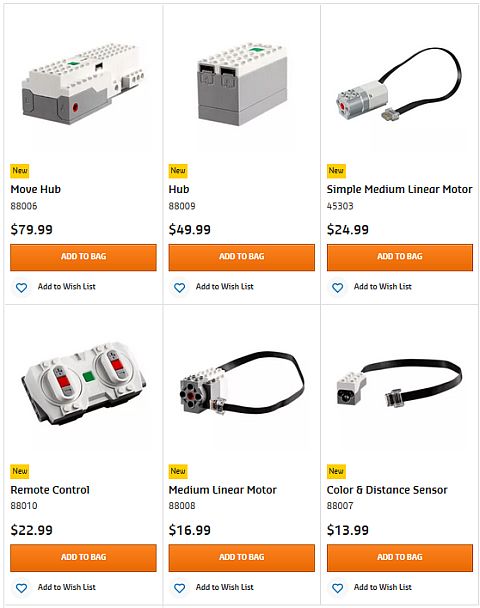
➡ LEGO ARCHITECTURE SUMMER SETS: There are two LEGO Architecture sets slated for this summer, the #21045 LEGO Architecture Trafalgar Square, and the #21046 LEGO Architecture Empire State Building. Trafalgar Square is already listed with a release date of August 1st at the LEGO Architecture section of the Online LEGO Shop.
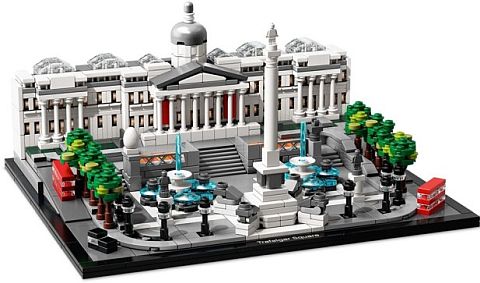
➡ LEGO CITY SUMMER SETS: LEGO City will have a large wave of sets this summer, including regular LEGO City sets and space exploration sets. The space sets are particularly interesting with space shuttles, rovers, a moon base, and even a space people pack! Amongst the regular LEGO City sets, one of the best ones is the #60233 LEGO City Donut Shop Opening. The #60234 LEGO City Fairground People Pack also looks great. Check the video summary below for pictures of all the summer sets revealed so far, and for the current sets visit the LEGO City section of the Online LEGO Shop.
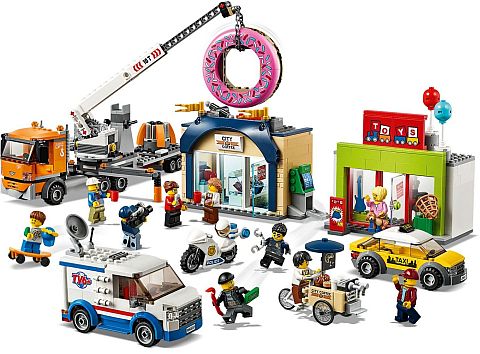
➡ LEGO CREATOR SUMMER SETS: There are some great LEGO Creator sets coming this summer as well. There is a UFO-themed carousel, a lovely modular townhouse, a helicopter, and a forest hut. All these sets will come with alternate builds as well. For pictures, see the videos below, and for current sets, visit the LEGO Creator section of the Online LEGO Shop.
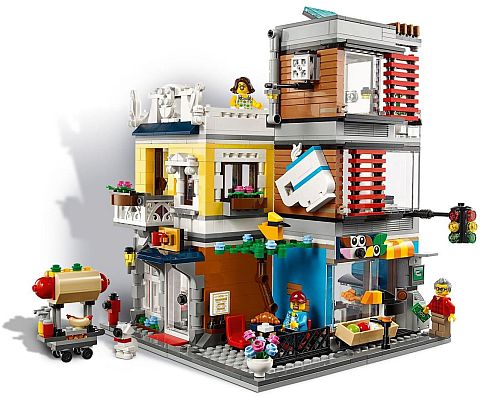
➡ LEGO FRIENDS SUMMER SETS: The LEGO Friends sets scheduled for this summer are exceptionally good as well. They include a large amusement park, several underwater and other water-themed sets, and a sweet restaurant. Watch the videos below for all the pictures, and you can also check out the current selection at the LEGO Friends section of the Online LEGO Shop.
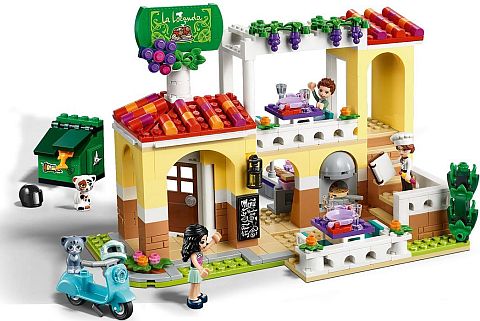
➡ LEGO HARRY POTTER SUMMER SETS: Four awesome LEGO Harry Potter sets have been revealed; the #75945 LEGO Harry Potter Expecto Patronum, the #75946 LEGO Harry Potter Hungarian Horntail Triwizard, the #75947 LEGO Harry Potter Hagrid’s Hut, and the #75948 LEGO Harry Potter Hogwarts Clock Tower. There are some amazing details in these sets, so make sure you check out the videos below. Also note that the clock tower can be combined with the previously released sets, which you can find at the LEGO Harry Potter section of the Online LEGO Shop.
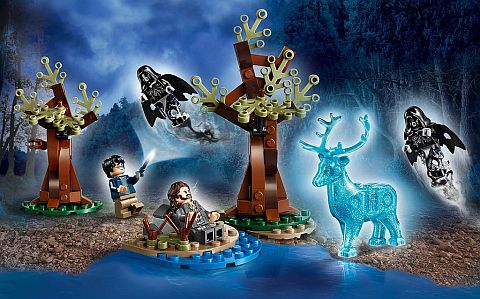
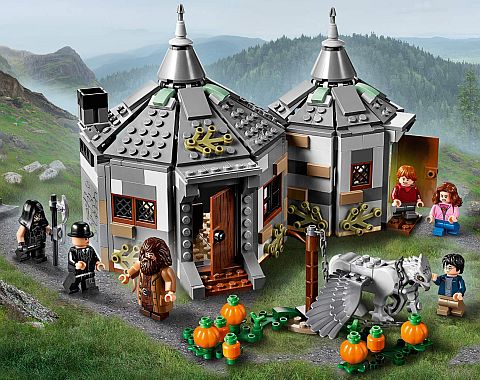
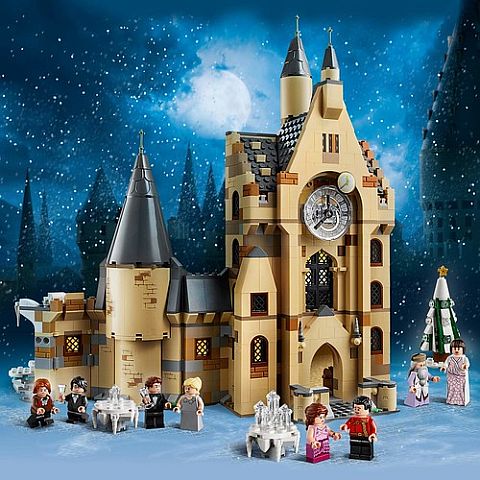
➡ LEGO NINJAGO SUMMER SETS: LEGO Ninjago is getting a large wave with some fantastic sets, and a new generation of spinners. Some of the highlights are the #70676 LEGO Ninjago Titan Mech, the #70677 LEGO Ninjago Land Bounty, and the #70678 LEGO Ninjago Castle of the Forsaken Emperor. Again, these are not the only sets coming, so make sure you check out the pictures in the video player below. And for the currently available sets, visit the LEGO Ninjago section of the Online LEGO Shop.
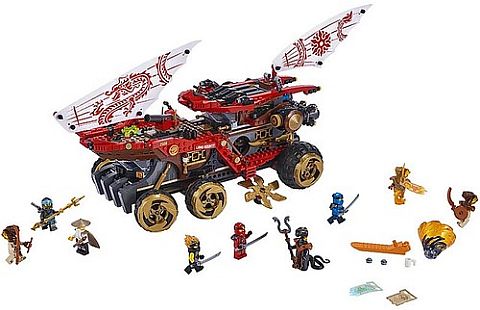
In the video-player below, I have included all the summary videos from JANGBRiCKS about the new 2019 summer sets. He will show you all the pictures, and give you a brief introduction for all the sets.
What do you think? How do you like the newly released sets? Are you planning to get anything on Star Wars Day? And what do you think of the summer sets? Do you have any favorites? Feel free to share your thoughts and discuss in the comment section below!
And you might also like to check out the following related posts:
- LEGO Marvel Avengers: Endgame Sets Reviews
- LEGO Ford Mustang Designer Video & More!
- LEGO Ideas Steamboat Willie Press-Release
- LEGO Ideas The Flintstones Review & Thoughts
- Review LEGO Welcome to Apocalypseburg!
- LEGO Corner Garage Review & Speed-Build
- 2019 LEGO Ninjago Legacy Sets Overview
- 2019 LEGO Spider-Man Sets Review
- 2019 LEGO Technic Sets Review & Thoughts
- The LEGO Movie 2 Sets Video-Reviews & More!
- LEGO Overwatch Sets Video-Reviews & More!
➡ LEGO SHOP IN USA: Online LEGO Shop USA
➡ LEGO SHOP IN CANADA: Online LEGO Shop Canada
➡ LEGO SHOP IN UK: Online LEGO Shop UK


